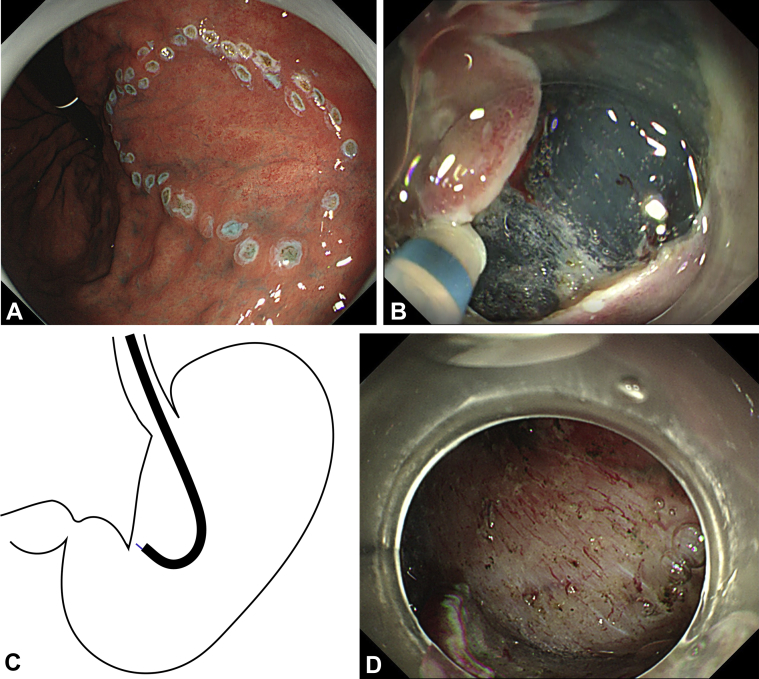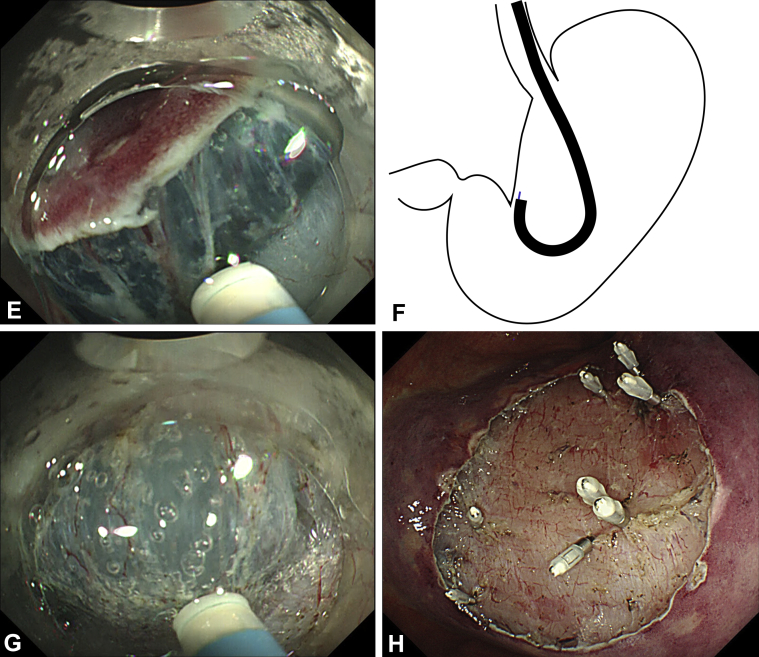Figure 2.
Patient 1. A, Type 0-IIc lesion at the lesser curvature of the lower body of the stomach. B, During use of a conventional endoscope, the knife-edge points toward the muscle layer. C, Approach to the lesser curvature of the lower body of the stomach by use of a conventional endoscope. The knife is angled toward the muscle layer. D, Pushing a conventional endoscope in the forward direction causes it to move away from the lesion (paradoxical movement). E, Using a multibending endoscope, we approached the resection site and adjusted the knife-edge angle to be parallel with the muscle layer. F, Approach to the lesser curvature of the lower body of the stomach by use of the multibending endoscope. The knife-edge approaches the dissection site and is angled so that it is parallel with the muscle layer. G, Performing dissection while maintaining a parallel angle between the knife-edge and muscle layer. H, Ulcer after endoscopic submucosal dissection. We used a hemostatic clip on large blood vessels to prevent secondary bleeding.


